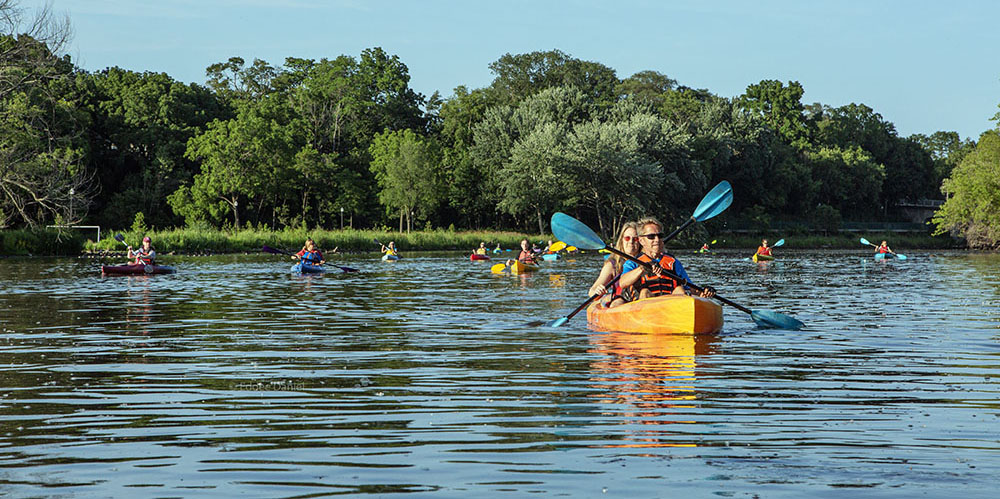
Kayaking the Root River with Root-Pike WIN and SEWRPC
July 26, 2023 | Topics: Events, Places
By Eddee Daniel, with contributions from James Mahoney (SEWRPC) and Kristine Heuser (Root-Pike WIN)
What a surprise! If you took a look at a map of the section of the Root River where we went kayaking you’d see it is literally in the middle of downtown Racine. Before we embarked I thought, how natural can this setting be? But, as the pictures that follow will prove, except for the bridge crossings, there was hardly a clue that we were in an urban area, let alone smack in the heart of downtown.
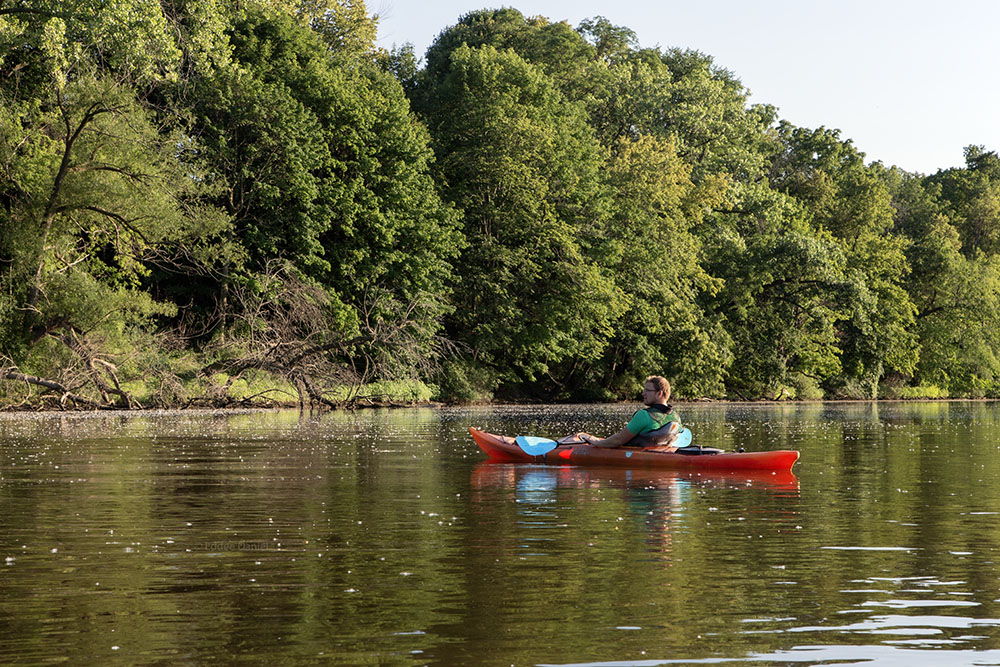
The paddling excursion was organized by Root-Pike WIN (Watershed Initiative Network) and SEWRPC (Southeast Wisconsin Regional Planning Commission). The launch site was the boat landing at the Root River Environmental Education Community Center, a grand and somewhat cumbersome title that turned out to be a shed where the kayaks were stored and a patio area where the group assembled. It is a partnership between the City of Racine, which owns and maintains it, and the University of Wisconsin – Parkside, which runs its rentals and programming. Fittingly, there was an educational component. The theme was Chloride pollution of the waterways.
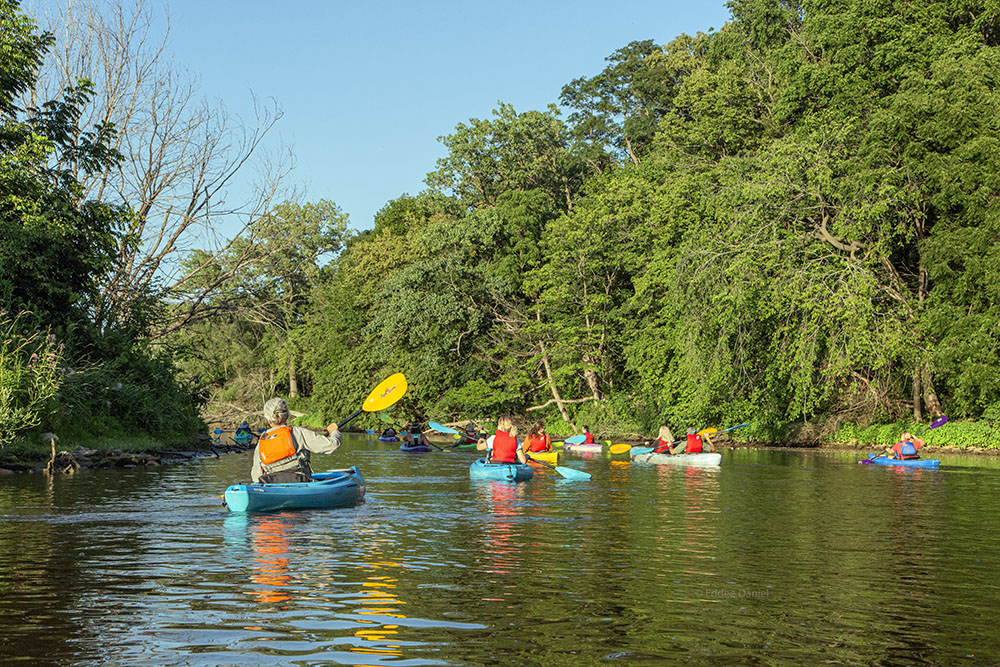
In an email, James Mahoney, Environmental Engineer at SEWRPC, sent me this synopsis:
“SEWRPC is working on a regional Chloride Impact Study to assess the sources and impacts of chlorides in the environment. Data was collected at 40 monitoring sites across the region to provide a view into chloride concentrations over the two-year study period. The major sources of chlorides in streams and lakes are winter road de-icing, water softeners, agricultural fertilizers, and wastewater treatment plants.”
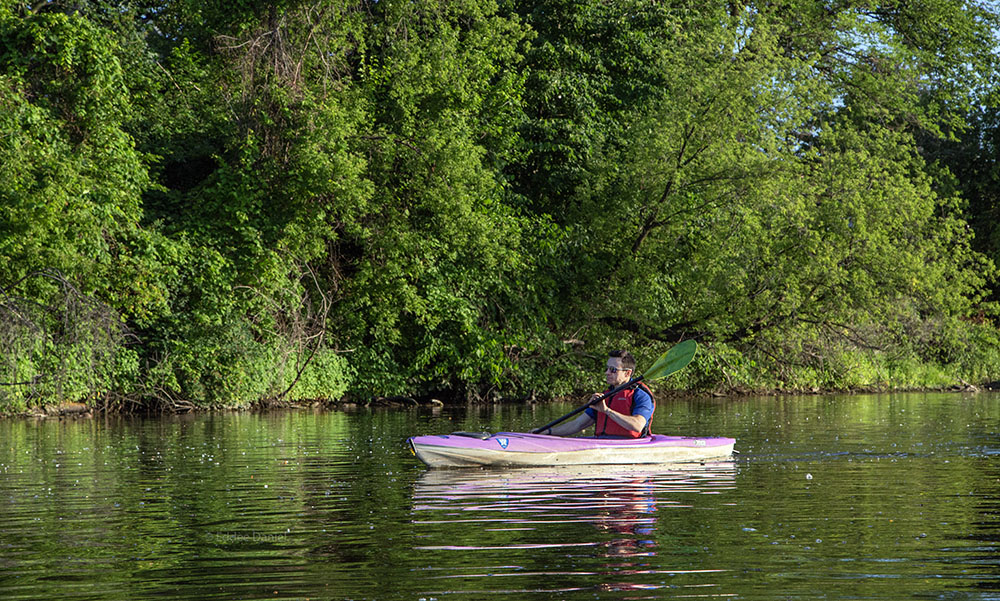
While the problem of using rock salt to de-ice roads in the winter is reasonably well known, there is more to the story of salt getting into rivers and lakes. I learned that water softeners are another major culprit. Mahoney explains: “Due to the harmful impacts chlorides can have on aquatic organisms, limits are set for in-stream concentrations. Efforts are being made to reduce chloride levels, which include using brine for winter road de-icing and using less rock salt, improving efficiencies of water softeners, and ultimately considering softening water at a centralized location prior to water delivery to households, allowing households to remove their water softeners.”
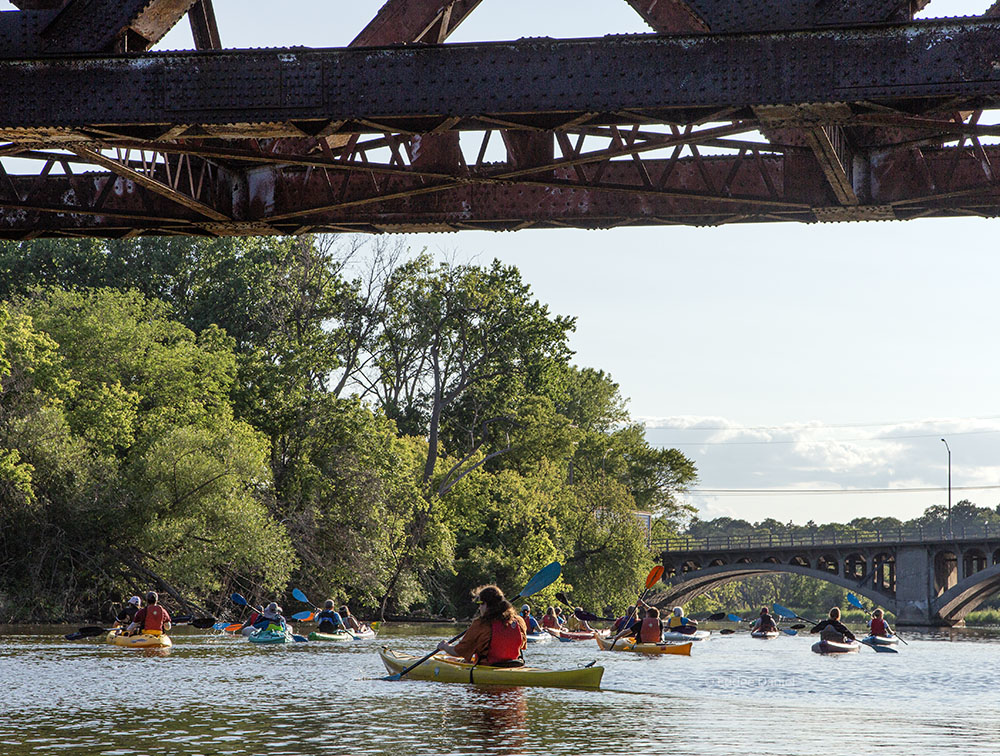
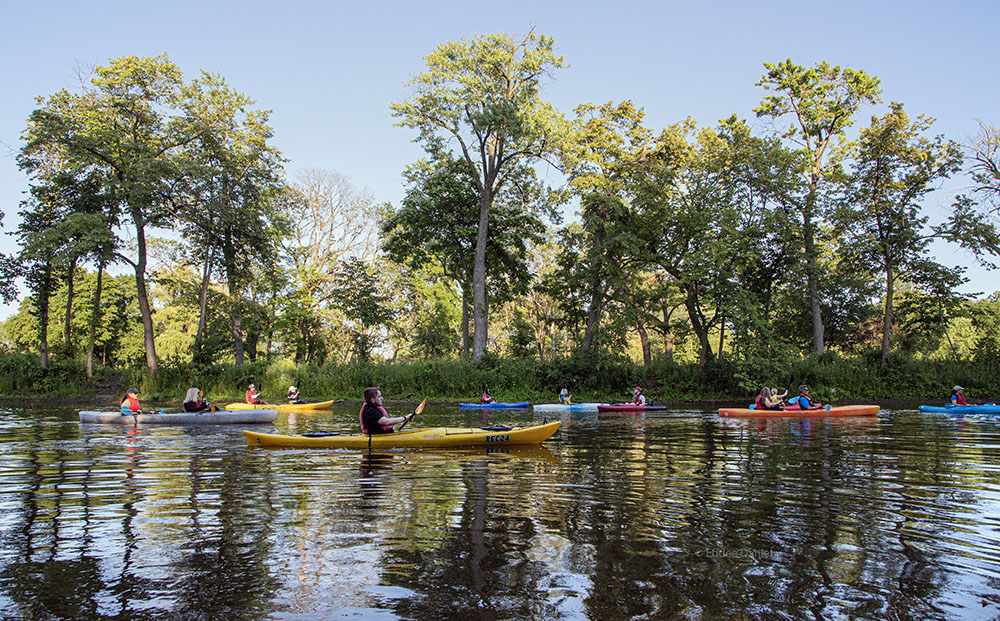
And there is even more to the story of pollution from runoff. Kristine Heuser, Stormwater Resource Consultant and Pollinator Patch Program Manager for Root-Pike WIN, provides this overview of her educational contribution:
“I gave a brief demonstration showing participants that “what happens to the land, happens to the water” using their watershed model. In addition to road salt, I showcased how pet waste, grass clippings, sediment, and leaf litter flow into local streams and rivers during storm events when left on public and private properties. The model is a great visual to remind everyone how their choices in their own yards can help or hinder water quality.”
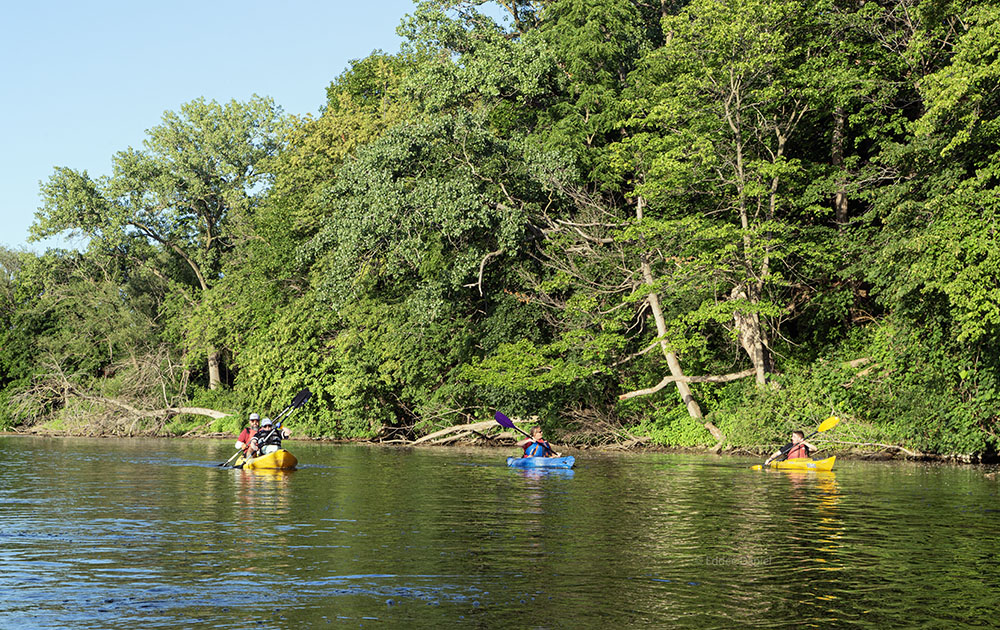
After the demonstrations, we all piled into the kayaks. This took quite a while! I didn’t take a head count, but there must have been approximately 20 people, which is one of the larger groups I’ve ever gone kayaking with. Personally, it doesn’t take much to get me out on the water, especially when it’s an opportunity like this one to explore a river, or section of a river, I haven’t tried before. But there was also a functional component to doing what was called a “Salt Paddle.” Heuser sent me this reflection about it:
“To sit and listen to people talk about water quality issues is one thing, but to pair it with a paddling experience in the river brought this event to the next level and solidified why we do the work we do. This was my first time doing the Salt Paddle, and I thought it was eye opening. I typically sit behind a computer and read the water quality data, but to get in the Root River and see the turbidity, questionable film, and trash right in front of me was unsettling. This really fired up my sense of urgency to get more restoration work moving in the Root River watershed so more people can enjoy this precious resource. I hope that the attendees of the Salt Paddle felt the same way!”
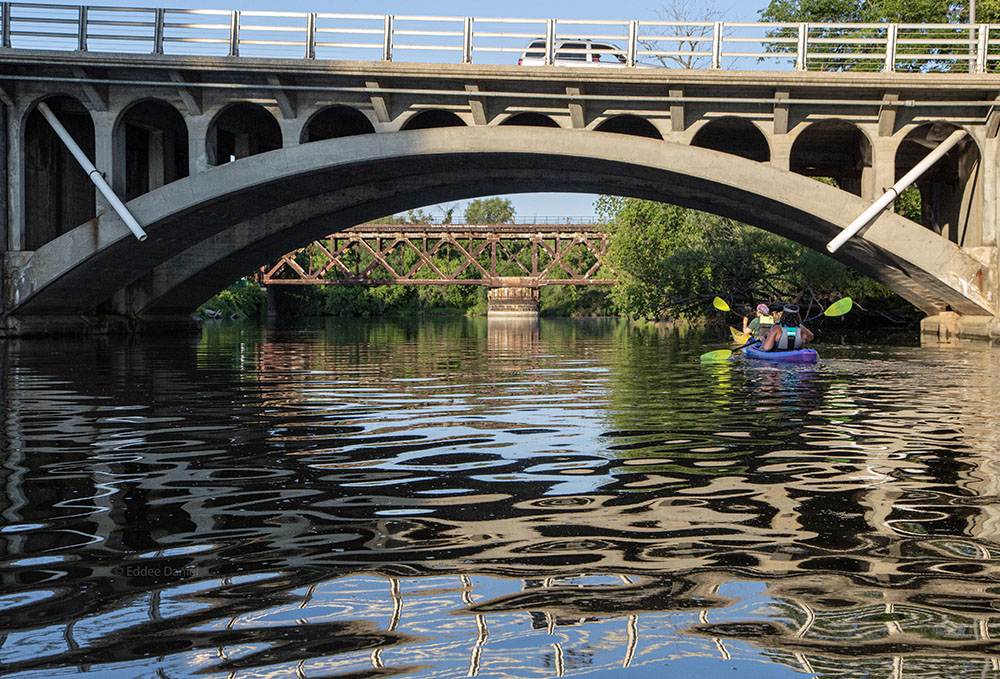
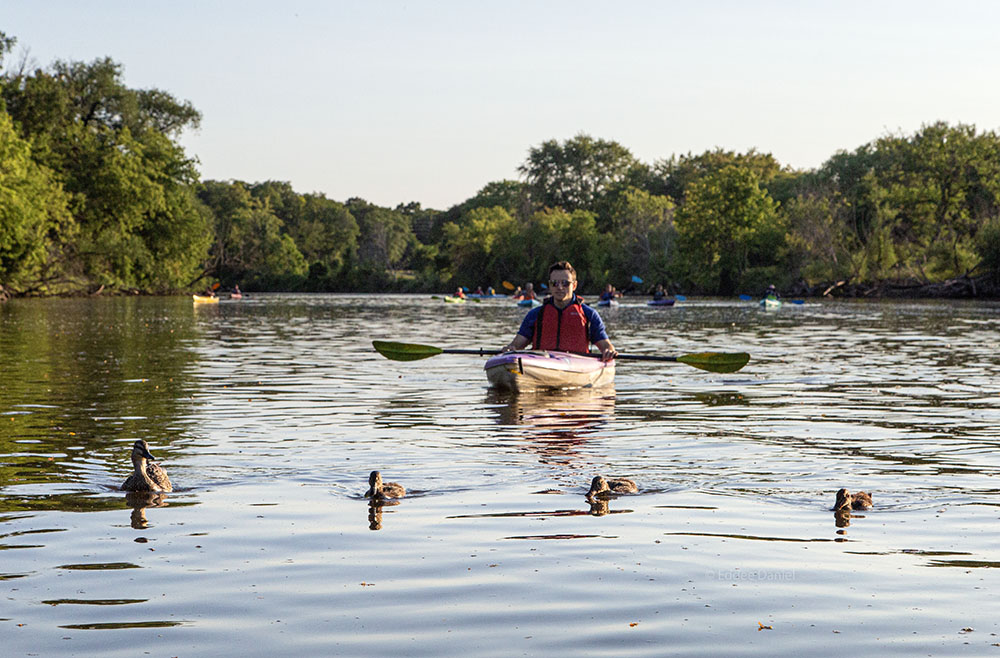
I love getting different perspectives on an experience like this! While Heuser was busy noticing the “turbidity, questionable film, and trash” in the water, I was totally absorbed in enjoying surprisingly natural surroundings. Both are essential responses to examining any urban waterway.
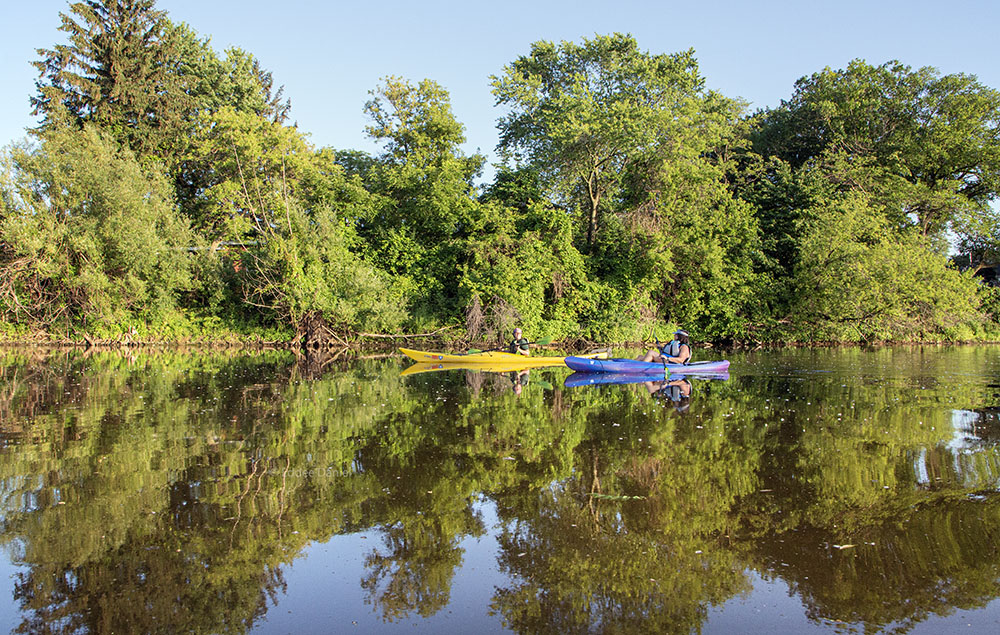
Most of the crowd in kayaks, including me, were not involved in collecting the water samples. However, as Project Director of A Wealth of Nature, I can totally relate to the goal of getting folks out to experience our natural resources for themselves and trying to develop an interest in protecting them. That pretty much states our mission in a nutshell!

Mahoney gives us a third perspective: “We did the kayaking to get out on the water and take a few water samples for testing for chloride concentration. We ended up running a little short on time, so the testing at the end got a bit rushed. Beyond the chloride testing, getting folks out on the water for a fun hour or so of paddling allowed people to see up close the water resources we are trying to protect and to build an interest in our waterways. Hopefully this helps show the connection between the paddling and the info session beforehand.”
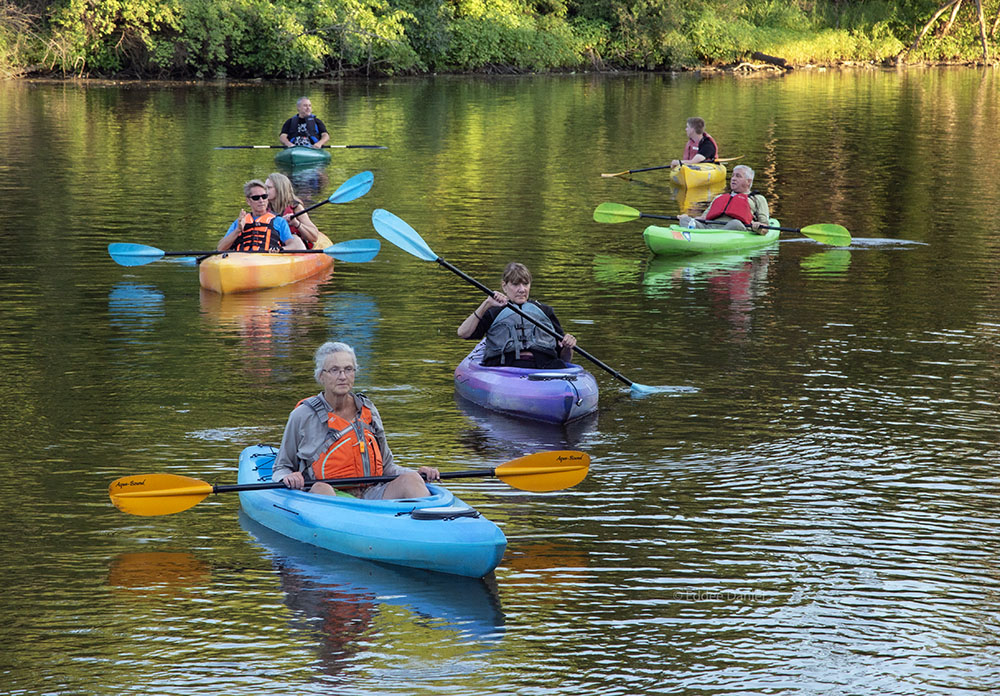
Speaking of which, if you are a kayaker (or canoer)—or would like to try it out—I can now testify to the quality of the kayaking on this stretch of the Root River. The boat ramp at the Root River Environmental Education Community Center is open to the public. Canoes and kayaks can be rented. We didn’t even get all the way to the dam in Lincoln Park, which means I have a good reason to go back and explore some more! (I’m told I should wait until there’s more water in the river for that though.)
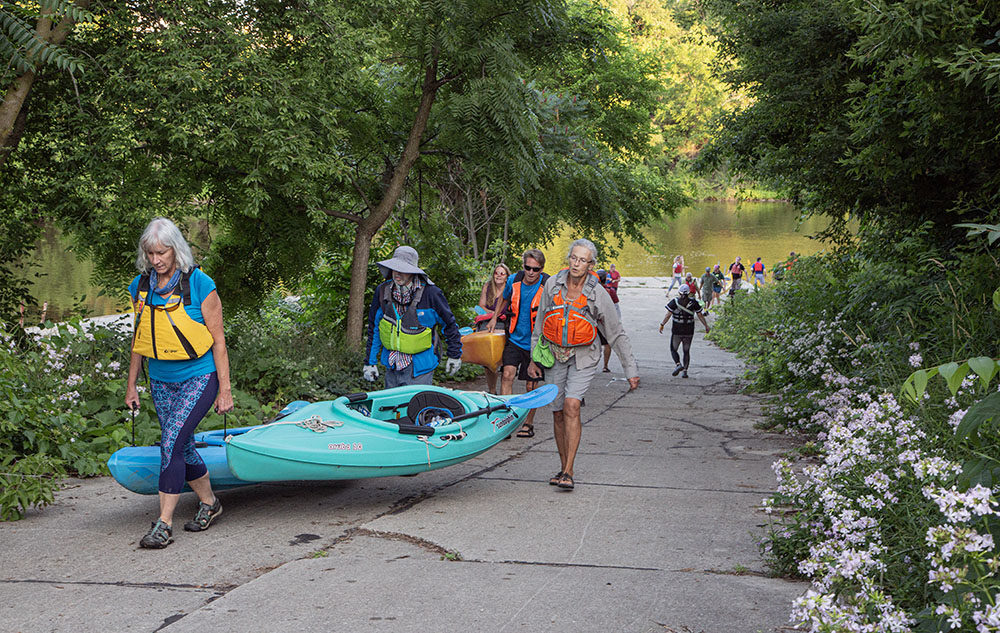
Related stories:
Kayaking a Surprising Suburban Wilderness
Kayaking Wild and Scenic Rivers!
Menomonee River Valley Kayak Tour 2020
Downtown Milwaukee’s river of kayaks
Kayaking in the Root River Challenge
Floating down the Bark River with Flotilla
Kayaking the Fox River in Waukesha County
James Mahoney is an Environmental Engineer at SEWRPC; Kristine Heuser is a Stormwater Resource Consultant and Pollinator Patch Program Manager for Root-Pike WIN; and Eddee Daniel is a board member of Preserve Our Parks.
5 thoughts on "Kayaking the Root River with Root-Pike WIN and SEWRPC"
Comments are closed.


Well written and informative story. You write from so many perspectives. :). And, do I detect new perspectives in you photography due to a drone? Wonderful photos.
Thank you for the river photos in my hometown! It’s my understanding that up near the Lincoln Park area you mentioned, in ISLAND PARK, there are MAJOR gardening efforts going on to improve this dear old magical park area. I hope you decide to visit that place one day.
Diana
Thanks Cheri. Yes, I do have a drone that I use now and then.
Thanks Diana, I definitely want to get back for another visit!
I enjoyed your story and beautiful photographs Eddee, especially the one of the arched bridge with the many shiny ripples in the water!